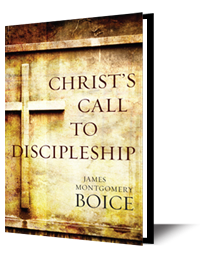
Jesus begins with his authority: “All authority in heaven and on earth has been given to me.” This is no weak authority, because the one who spoke it is no weak master. He is the risen Lord, and “all authority in heaven and on earth" has been given to him.

I am sure you have noticed in your study of the New Testament that nearly all the resurrection appearances of Jesus end with his telling those to whom he appeared to announce the good news. It was the case with Mary Magdalene: “Go...to my brothers and tell them, I am returning to my Father and your Father, to my God and your God” (John 20:17). It was the case with the women who were returning from the tomb. The angel had told them: “He is not here; he has risen, just as he said. Come and see the place where he lay. Then go quickly and tell his disciples: ‘He has risen from the dead’” (Matthew 28:6-7). When Jesus appeared to the women shortly after that, he said, “Do not be afraid. Go and tell my brothers to go to Galilee; there they will see me" (v. 10).

Yesterday we addressed the importance of telling others the good news of the resurrection. Yet we must not be naive about the opposition. For the women who went to the tomb were not the only ones who knew about the resurrection, according to Matthew. The soldiers also knew about it. They were present when the angels rolled away the stone and were terrified by it. They went to the religious leaders to report what had happened. “Angels came! They opened the tomb! The body is not there!”

We concluded yesterday by looking at what we should see when we look into Christ’s empty grave. We’ll continue that in today’s lesson with the fourth point, the most important one. We must look into the tomb to see that Jesus is not in it. He is risen, as he said. He has conquered death. The empty tomb is one great evidence of the resurrection. Most people who have written seriously about the events of this momentous week have noticed, if they have been honest, that in all the reports we have, whether in the New Testament or in secular sources of the time, there is not one instance of any attempt to deny the grave was empty. There are alternative explanations. One of them is in the verses that follow these in Matthew: that the disciples stole the body. But there is not one writer anywhere who has denied that the tomb was empty and the body gone. What can account for it? Not theft by Christ’s enemies; if they had had the body, they would have produced it later when the resurrection was proclaimed by Jesus’ followers. Not the disciples either; for if they had stolen the body, they would not have been willing to die, as many of them did later, for what they knew was a fabrication. The only adequate explanation of the empty tomb is that Jesus had been raised from the dead as the Bible teaches.

The way these accounts fit together makes the narrative compelling, and it may not be overstating the case to say, as Matthew Arnold once did, that the resurrection of Jesus Christ is “the best attested fact in history.” Lawyers in particular have found this to be true, jurists like Frank Morison, Gilbert West, J. N. D. Anderson, and others. Sir Edward Clark, a well-known English jurist, wrote, “As a lawyer I have made a prolonged study of the evidences for the first Easter day. To me the evidence is conclusive, and over and over again in the High Court I have secured the verdict on evidence not nearly so compelling. As a lawyer I accept it as the testimony of men to facts that they were able to substantiate.”1


















